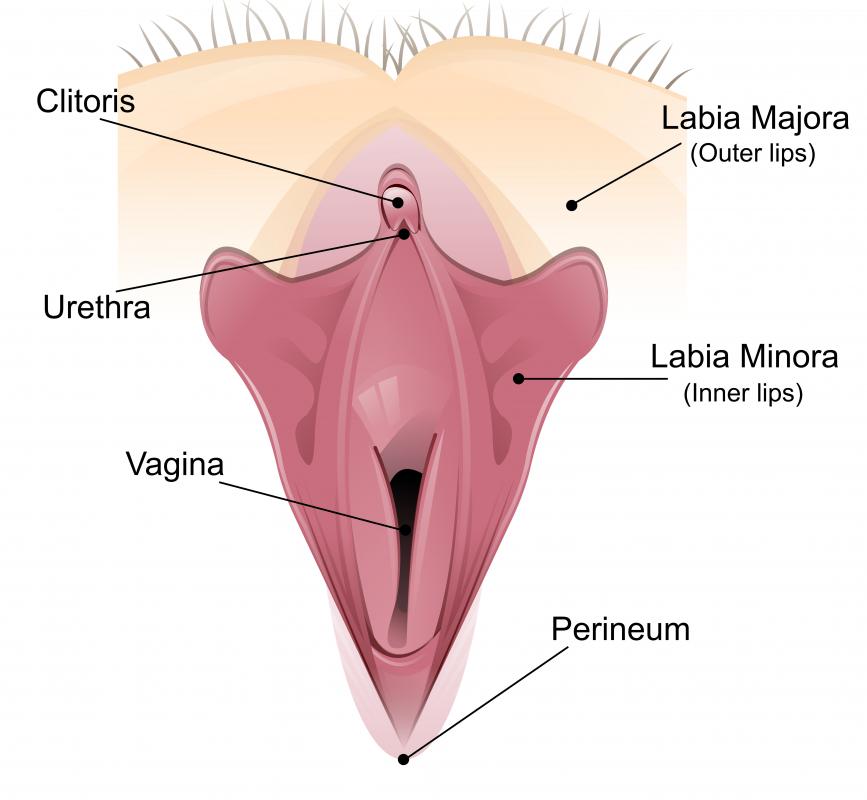At WiseGEEK, we're committed to delivering accurate, trustworthy information. Our expert-authored content is rigorously fact-checked and sourced from credible authorities. Discover how we uphold the highest standards in providing you with reliable knowledge.
What is Sebaceous Hyperplasia?
Sebaceous hyperplasia is a condition that causes enlargement of the sebaceous glands of the face, resulting in the development of yellow lesions. It is common in people who are middle-aged or older, with a frequency of approximately one percent. Sebaceous hyperplasia is a benign condition and cannot become cancerous.
Hormone levels decrease with age, causing many different types of changes in the body. Sebaceous hyperplasia is one such change, caused by a reduction in levels of hormones called androgens. As a result of this reduction, cells of the sebaceous glands die off more slowly, which leads to a relative increase in the number of sebaceous cells present in the glands. The consequence of this is enlarged sebaceous glands that can grow up to 10 times as large as normal glands.

Sebaceous hyperplasia is most noticeable on the face, because of the higher concentration of sebaceous glands. Lesions also can develop on the upper arms, chest, the areola of the nipples and on the genitals. These lesions are usually soft and pale yellow in color, with a smooth surface. They are not associated with itching or any other sensation. When scratched or shaved over, the lesions become irritated and can bleed.

Hyperplasia of the sebaceous glands rarely requires treatment, but lesions occasionally can become inflamed or infected as a result of chronic irritation. They are often undesirable for cosmetic reasons as well as health reasons. One problem with treatment is that lesions recur unless they are removed completely. A lesion can be treated with medication, for example, but is likely to recur after the medication is discontinued.

There are a number of common treatments used to partially or completely remove enlarged sebaceous glands. These include chemical treatments such as the use of trichloroacetic acid, laser treatment and liquid nitrogen cryotherapy. Lesions also can be removed via surgical shaving or surgical excision. All of these methods of removal carry a risk of scarring or altered skin pigmentation.

Retinoids are the most common type of medication prescribed for sebaceous hyperplasia. These drugs can help reduce the size of lesions by regulating cell growth, with results seen within two to six weeks. Many people experience unpleasant or dangerous side effects as a result of long-term use of Retinoids, however, and lesions often return within one month after ceasing medication.
While hyperplasic lesions are not cancerous and cannot become so, some lesions can resemble a type of skin cancer called basal cell carcinoma. For this reason, any unusual lesions should be checked by a doctor. If a lesion appears to be unusual, a biopsy might be required to ensure that it is not malignant.
AS FEATURED ON:
AS FEATURED ON:














Discussion Comments
I also have it, and it is really awful at times to the point that I feel like putting a bag over my head. I'm 52 and feel worse than a teen with acne, which I also had as a teenager. I wish there were more I could do naturally, but it seems hopeless.
I have it. It makes me miserable at times. But, I guess I've got to live with it.
Having them surgically removed (even cryosurgery) will give me red marks and small scars, which may be worse than the bumps. God only gives us what he knows we can handle.
Post your comments